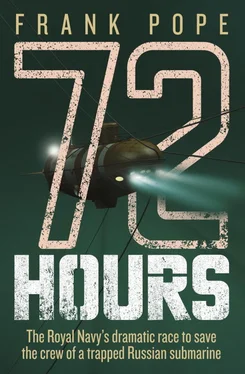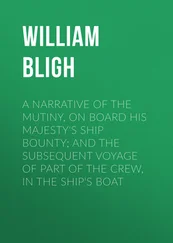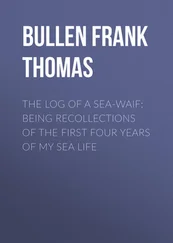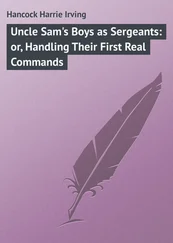Twisting the joystick, Nuttall turned the vehicle in that direction and started heading along the side of the array, keeping the looming, sealife-encrusted metal on the right of the screen. The visibility was excellent compared to what he was used to. In the North Sea you’d often be lucky to see a metre, but here he could see more than ten. Scorpio pushed onwards through the light snow of sediment, but all that appeared from the darkness was more featureless metal until the enormous tube suddenly ended.
There was no submersible. Podkapayev began talking excitedly, and the interpreter explained that they must go around to the other side of the array and continue to the other end. Gold and Nuttall looked at one another. That meant having to loop the umbilical over the top of the array. In the rush to deploy Scorpio, KIL-27 had been moored with the array between the ship and AS-28 . Either that, or their improvised mooring system was moving a whole lot further than it should have been. Neither thought was particularly reassuring.
‘We should reposition,’ said Gold. ‘If the umbilical gets stuck we’re not going to be helping anyone.’
But moving over to the other side of the array could take hours, given how long it had taken to get into this position in the first place. After a short discussion, Gold nodded to Nuttall, who spun Scorpio around and began flying back along the top of the array, keeping it slightly to his right. With the vehicle travelling as fast as it would go – about two knots, or walking pace – the tubing passed beneath like an outsize pipeline, reminding both men of the endless oil and gas pipeline surveys they’d done in their offshore existences.
The array was now occupying the whole of the right-hand side of the long-range Ametech sonar display. Gold began twisting a knob on a second console, the high-frequency array. Pinging at 675 megahertz as opposed to the 100 MHz on the long-range, the colour Tritech was much more twitchy, but much more sensitive. Tune it right, and you could pick up the echo of a 5-litre paint pot sitting on a sandy bottom. The colour gave a sense of how hard the objects up ahead were, ranging from blue for non-existent, through hues that got warmer as the obstacles became harder until they became white for solid metal. With both sonars now groping forward beyond visual range, Gold suddenly cleared his throat.
‘All right, what’s this little beastie now?’ he said. A white lump had appeared on the high-frequency array. ‘Slow up a little there, Pete.’
Sunday, 7 August
SS + 67 h 32 mins
00.02 UK – 03.02 Moscow – 12.02 Kamchatka
AS-28 , 210 metres below Berezovya Bay
When word came from the surface that the British rescue submarine was on its way, Gennady Bolonin flicked on the outside navigation lights of AS-28 . It might use up valuable battery supplies, but looking at the state of the crew anything that would bring help faster was worth it.
Back in the aft compartment, huddled on the floor, the men’s faces were frozen masks. Their eyes were dull compared to the glistening of the weeping submarine walls in the red emergency light. If there was hope here, it was deeply hidden, thought Bolonin. Then there was a murmur from the huddle. It was Milachevsky. He’d heard something.
There was a visible straining of ears, and then Bolonin heard it too, the almost unbelievable murmur of the foreign machine. It had an electrifying effect. Milachevsky hauled himself up and through the hatch to the forward compartment to the periscope. It was a Herculean effort that left him panting and grasping on the handles as he scanned the water around them. He couldn’t see anything.
The murmur seemed to be coming down straight on top of them. How had the British managed to locate them so precisely? It seemed miraculous.
Standing at the periscope, Milachevsky’s body tensed. ‘It’s here,’ he said, his voice a hoarse whisper. ‘I can see the lights. It’s here.’
Sunday, 7 August
SS + 67 h 35 mins
00.05 UK – 03.05 Moscow – 12.05 Kamchatka
Rescue fleet, Berezovya Bay
The flow of barnacles beneath Scorpio’s runners slowed, and all eyes in the control van were boring into the grainy blackness of the front camera. Suddenly out of the gloom appeared a white stripe. For a second no one could be sure, and then there she was, solid and real, with ‘28’ painted on her fin.
Looking at the squat, foreign shape of the Russian submersible’s hull, Riches felt another surge of adrenaline tingle through his veins. He was now acutely aware that this was not an exercise, that there were men inside this steel container and that if his team didn’t do their job properly they would not live.
Each of them was staring intently at the screens and control panel. Nuttall was focused completely on keeping Scorpio exactly where he wanted it, his eyes flicking between the camera displays, sonars and instrument sensors, trying to sense the conditions in the water around the robot and gauge any dangers to his mission. With the immediate piloting being dealt with by Nuttall, Gold was trying to plan the best way of reaching the visible lines that were trapping AS-28 , mapping the shifting matrix of ships, anchors, umbilical cables and array structures at the same time as taking Scorpio’s temperature from the various dials in front of him. Podkapayev’s face was hard to read, as though buffeted simultaneously by both hope and fear.
‘Take it easy there, Pete,’ said Gold. ‘Let’s take a good look around before getting too close.’
Nuttall didn’t need reminding. At the forefront of his mind for the last 30 hours had been the fear of blundering in too fast and getting Scorpio stuck.
Holding Scorpio still in the water, he began using the front camera’s pan and tilt to take a look what was holding AS-28 tight against the array. It seemed broadly similar to the diagram that the Russian survey had produced. Most of the cables were bunched towards the front of the fin. They had evidently been there for some time, for they had accumulated a crust of marine growth. From the propeller guard protruded what looked like a tuft of fishing net.
‘Okay, let’s go say hello,’ said Gold. Nuttall nodded, and increased the power until the submersible’s vertical stripes filled the camera and the solid cutting arm that protruded like an insect’s proboscis struck the foreign machine’s hull. Riches’ mind was so fully inside the robotic vehicle below that he fully expected a loud ‘bong’ as metal struck metal. But there were no microphones on Scorpio. The silence that filled the room instead seemed chilling.
It was standard practice to tap a distressed submarine on first arrival, and Gold had done so on every exercise he’d joined. Even though the Russians said they had communications with the men inside, he wanted to create a bond between his team and the shivering, half-suffocated men inside. Given his experience of misinformation from the Russian authorities on the Kursk , he had no idea what condition they were really in. Morale might be the only thing that got them through these few final, critical hours.
In most submarine rescue scenarios, raising spirits was one of Scorpio’s main functions. Aside from locating the site and testing the surrounding currents, checking hull integrity, conducting a radiation survey of a disabled nuclear submarine, and clearing any debris from around the escape hatches, Scorpio would carry down canisters of supplies to drop into specially designed hatches on the deck of UK and other NATO submarines. If the rescuers were in contact with the sailors, they could pack whatever was required inside the pods. If not, they would try and anticipate what would be wanted. Among the practical items like water and food were stashed whisky and pornographic magazines – anything to stir their resolve to live to see the surface again.
Читать дальше












